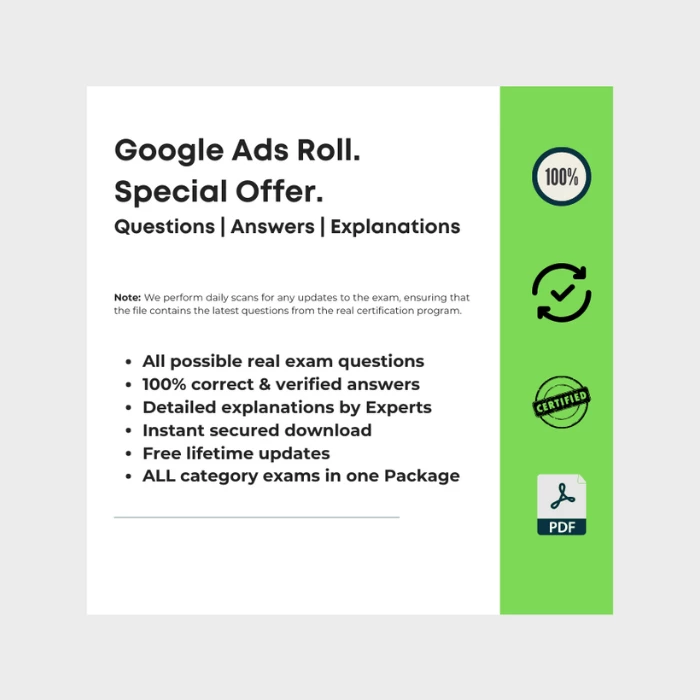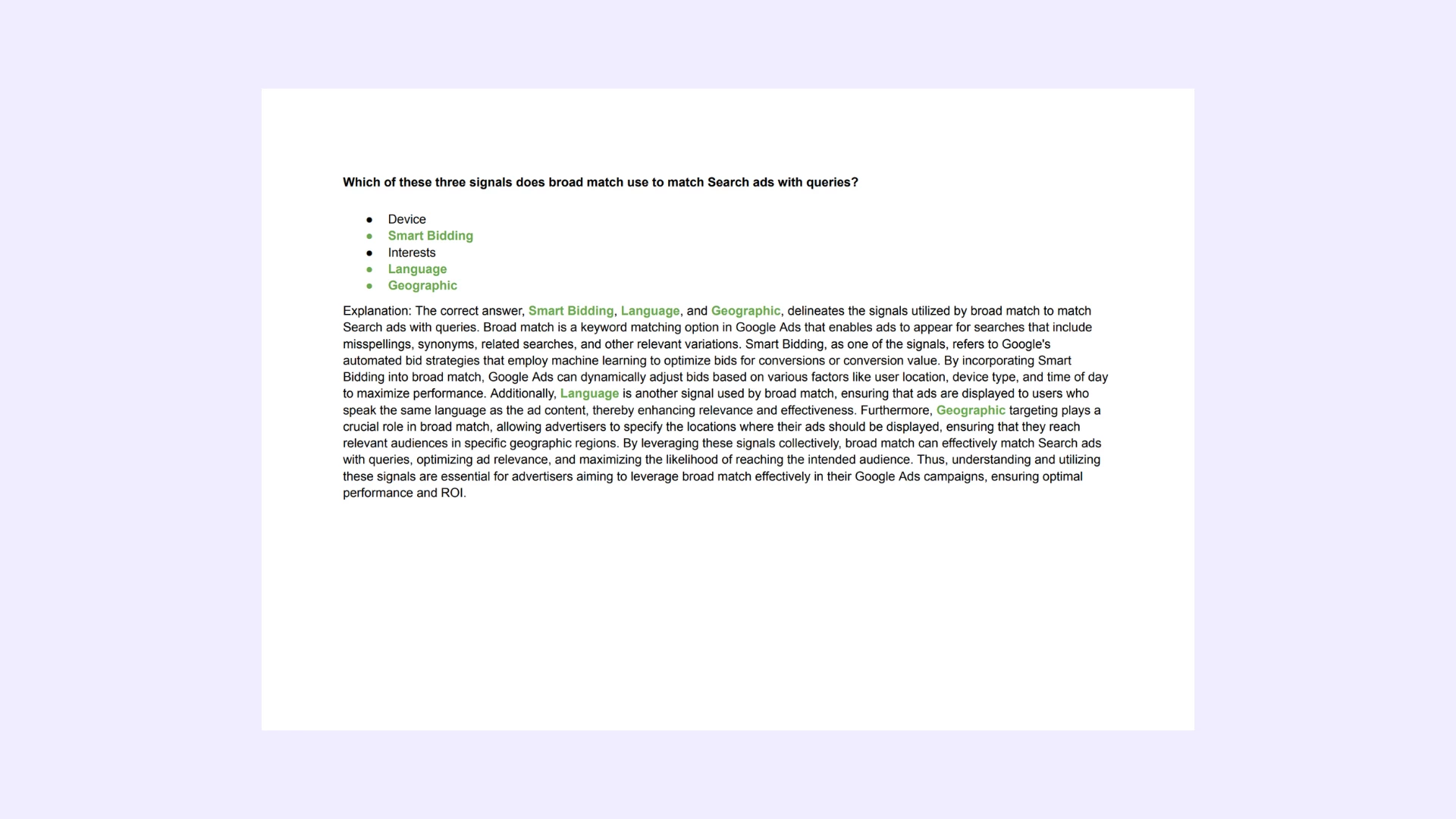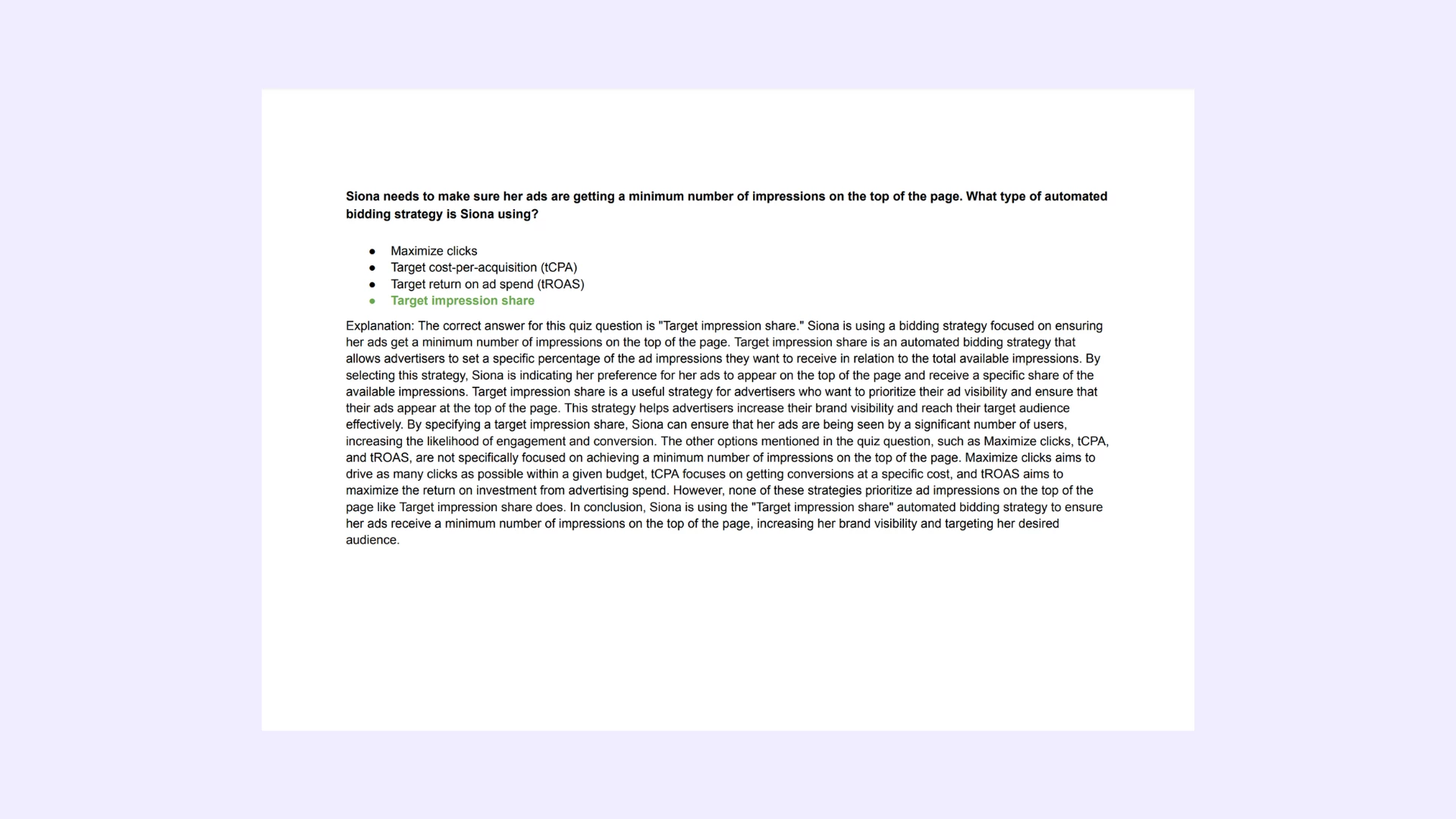When should you expect to pay for a Shopping ad?
After someone buys something on the site
After someone searches for your item
After someone clicks on your ad and lands on the site
After someone views your ad without engaging
Choose an option to see if it’s correct. Check the explanation below. Learn Smarter, not Harder.

Google Ads Roll. Includes Answers for Every Real Google Ads Certification Exam.
All-in-One: Get all Google Ads exams answers with explanations in one bundle. This package includes answers for every current Google Ads certification. Regular updates to reflect the latest exam version. -> See what's included.
Questions | Answers | Explanations. Free Lifetime Updates.


Need a single cerification exam answers? Check out our -> list of certification exams answer keys. Learn Smarter. Obtain or Renew your certificates with peace of mind!
Explanation: When should you expect to pay for a Shopping ad?
Explanation: The correct answer is **'After someone clicks on your ad and lands on the site.'** In the context of Shopping ads, advertisers typically use a pay-per-click (PPC) model, meaning they only incur costs when a user interacts with their ad by clicking on it and subsequently lands on the advertiser's website. This cost-per-click (CPC) model ensures that advertisers pay for actual engagement and potential traffic generated by their ads, rather than simply for ad impressions or views. By charging advertisers based on clicks, Google aims to align the cost of advertising with the actual value delivered, as clicks indicate a level of user interest and intent that can lead to conversions or other desired actions on the advertiser's site. Therefore, advertisers should expect to pay for Shopping ads only after someone clicks on their ad and is directed to their website, making CPC the primary billing method for this ad format.
Were do I find this certification program?
This certification program is available on the Google SkillShop Platform. With our file, you can get certified in just a few minutes. Free updates are included.
Save time on exams and spend more time practicing.
Best-value Guides
- Special Bundle Offer Google_Ads_Roll
- Special Bundle Offer HubSpot_Exams_Roll
- Special Bundle Offer Google_SkillShop_Roll
- Special Bundle Offer Marketing_Platforms_Roll